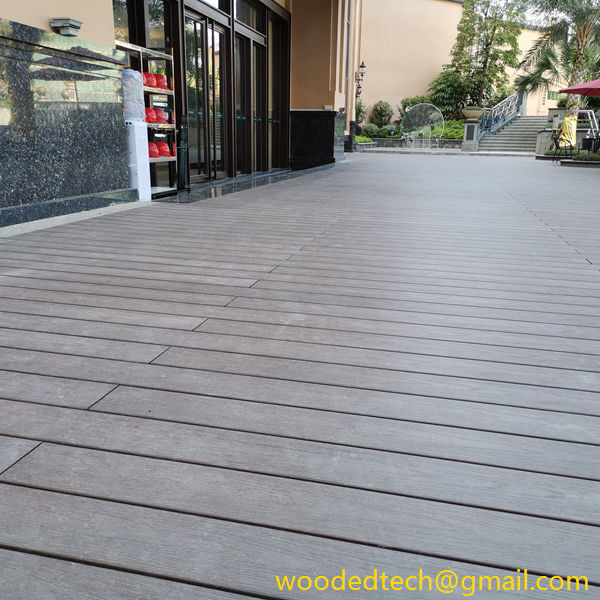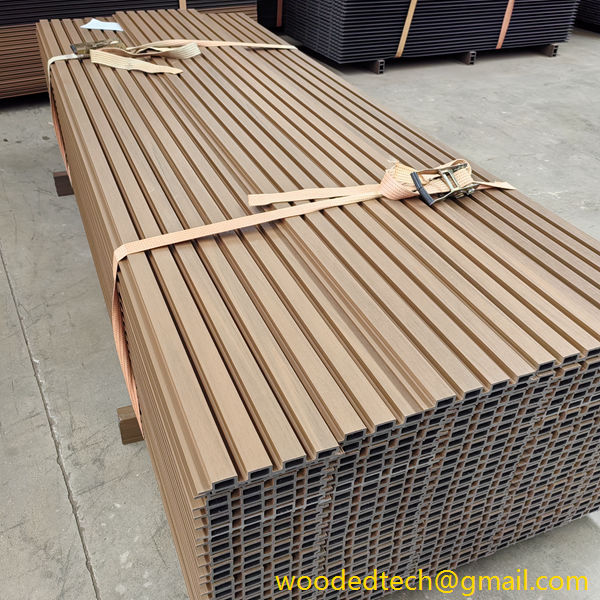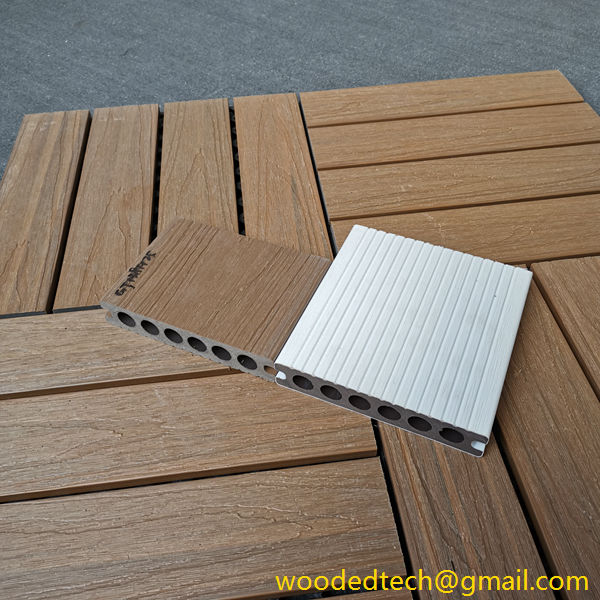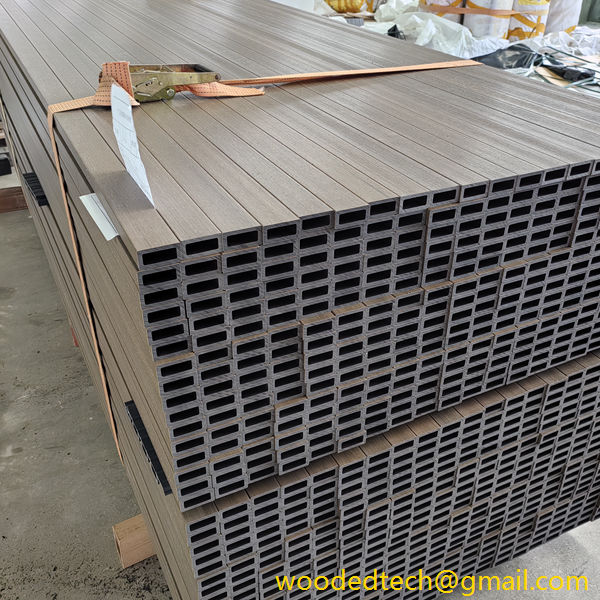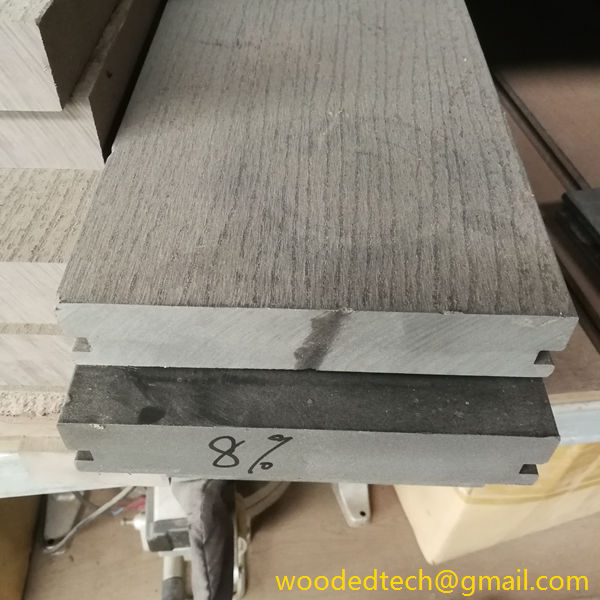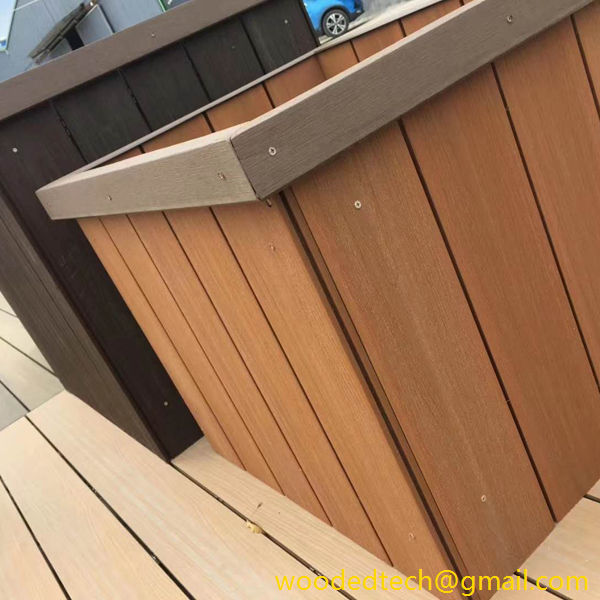
Best China wPC decking factory saying:How many process of outdoor WPC decking manufacture?
Outdoor WPC decking, as an environmentally friendly floor decoration material, has been increasingly popular in the market in recent years. This material not only possesses the warm texture of wood and the durability of plastic, but is also highly praised for its recyclability and reduced environmental damage during production. Today, let’s delve deeper into the production process of outdoor WPC decking and see how this environmentally friendly innovative product is manufactured.

The first step in producing outdoor WPC decking is the preparation of raw materials. The main raw materials for outdoor WPC decking include wood fiber or wood powder, plastics, and various additives, which usually include coupling agents, UV stabilizers, colorants, and foaming agents. Wood fiber is usually obtained by recycling waste wood, sawdust, rice husks, and other agricultural and forestry residues, while plastics are mostly made from recycled polyethylene (PE) or polypropylene (PP).

The next step is to mix and granulate the raw materials. In a high-speed mixer, the dried wood fibers are uniformly mixed with plastic particles and various additives, and then the mixture is transported to a plastic granulator. Through the action of high temperature and pressure, the mixture is plasticized and extruded into long strips, which are then cooled and cut to form wood plastic composite material particles.
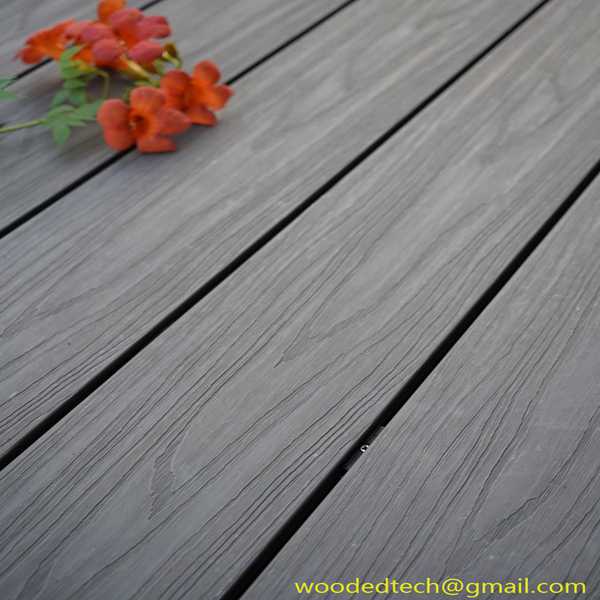
The next step is extrusion molding. Put the prepared wood plastic composite material particles into a dedicated extruder and push the material forward through the rotation of the screw. During the heating and extrusion process, the material is plasticized again and extruded through a specific shaped mold head to form an exterior WPC decking profile with a specific cross-sectional shape. This stage has strict requirements for temperature control to ensure the uniformity and stability of the material.

After molding, the exterior WPC decking still needs to be cooled and shaped. The newly extruded hot floor profile will enter a cooling and shaping device, which rapidly cools it down through circulating water or air to harden the profile and maintain its shape.
After the floor profile is completely cooled, it enters the cutting process. According to actual needs, cut the long floor profile into standard sized boards, ensuring accurate dimensions and smooth edges during the cutting process.
Next is the surface treatment process. In order to enhance the aesthetics and practicality of outdoor WPC decking, surface treatment is usually carried out. Common treatment methods include sanding, polishing, coating, etc. This not only improves the glossiness and texture of the floor surface, but also enhances its wear and scratch resistance.
The processing of some special functions is also completed at this stage, such as functional treatments such as anti slip, anti-static, or antibacterial. These functions are usually achieved by coating specific functional coatings on the surface or adding special functional masterbatches.
The first step is to inspect the packaging. Before the final product leaves the factory, a comprehensive quality inspection of the finished product is required, including testing of appearance quality, dimensional accuracy, physical properties, and other aspects. After confirming the accuracy, the qualified outdoor WPC deck will be packaged and distributed to various markets or users according to the order requirements.
The production process of outdoor WPC decking involves a series of complex processes, including the selection and preparation of raw materials, precise extrusion molding, meticulous surface treatment, and strict quality inspection. Every step requires careful operation to ensure that the final quality of the product can meet the needs of consumers for environmental protection, aesthetics, and practicality. With the advancement of technology and the enhancement of environmental awareness, outdoor WPC decking will undoubtedly play an increasingly important role in the future building materials market.

